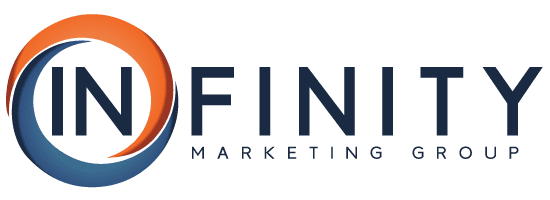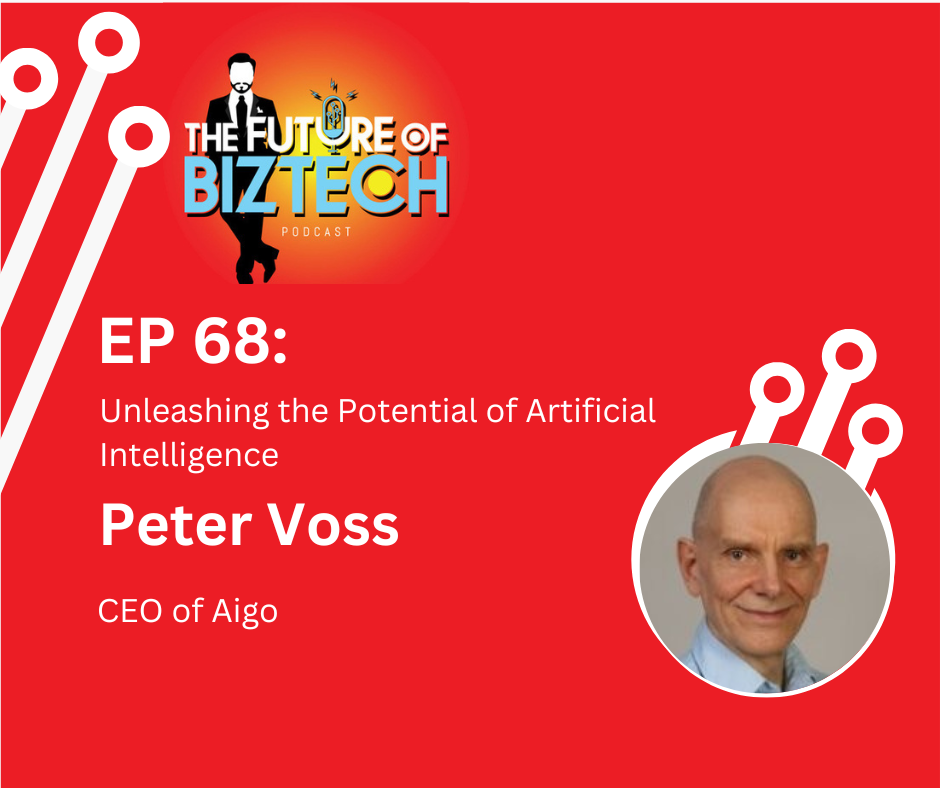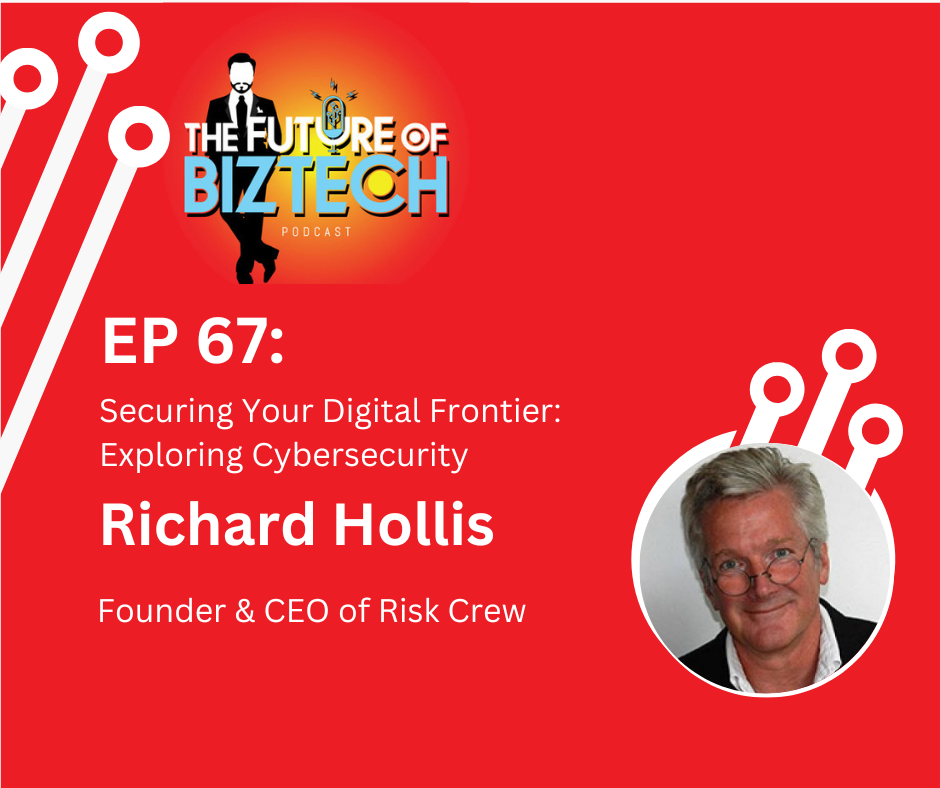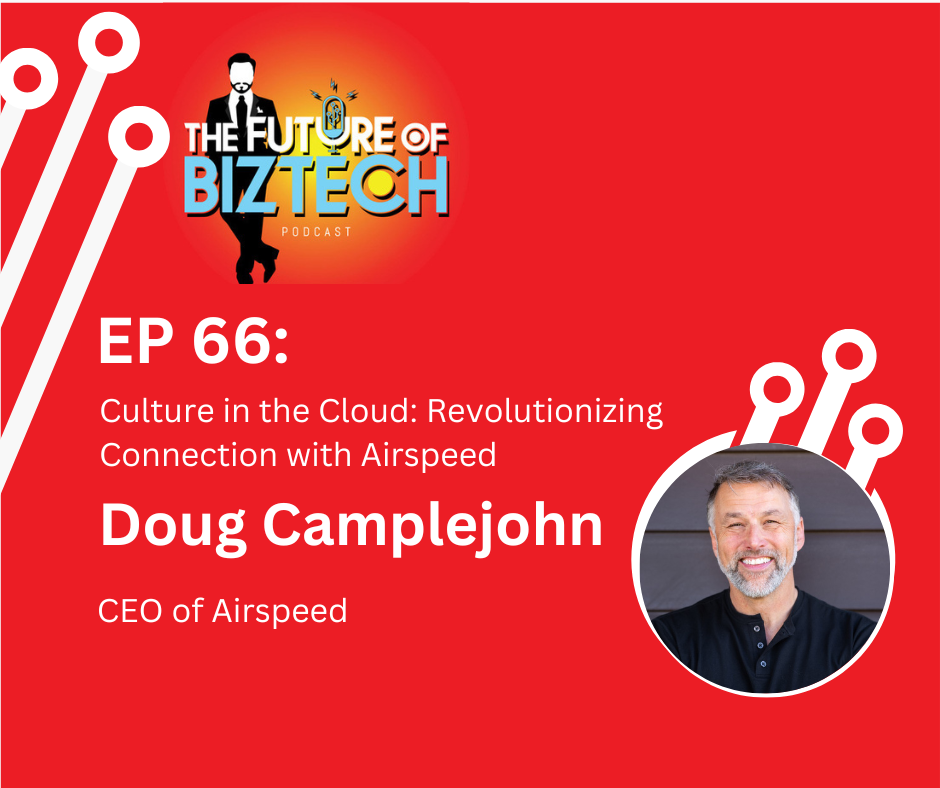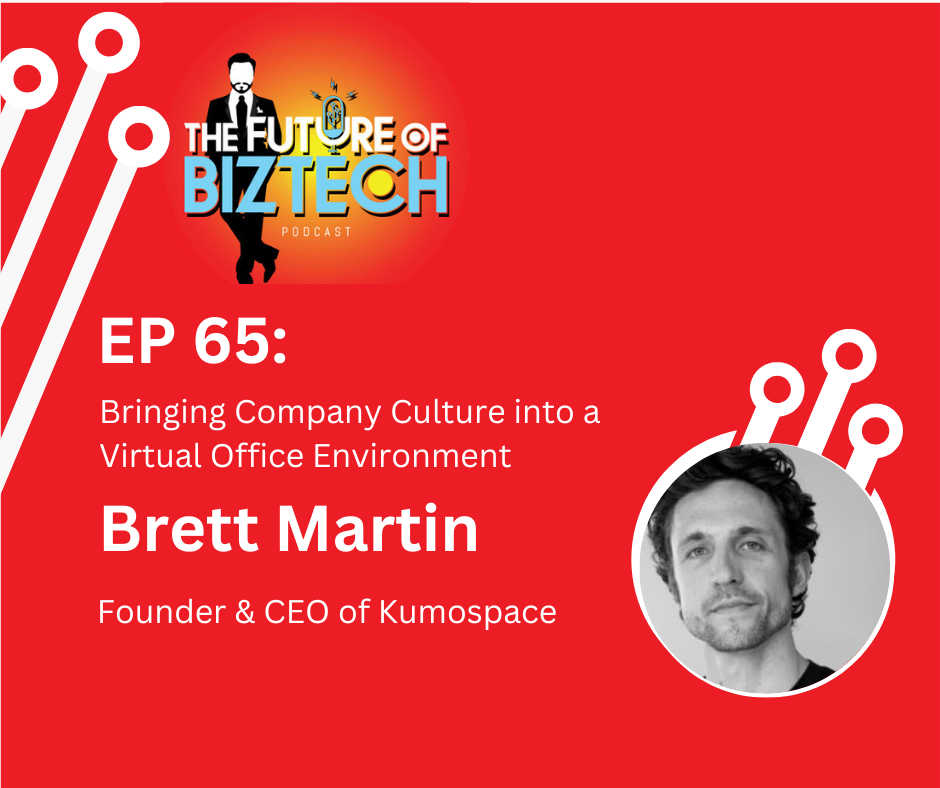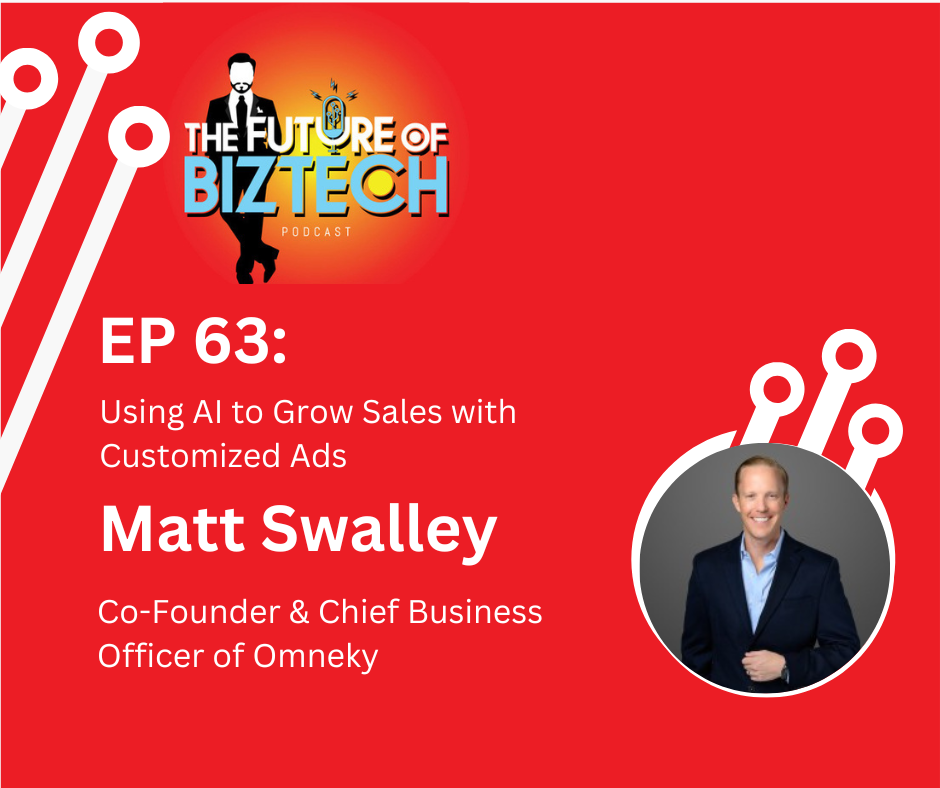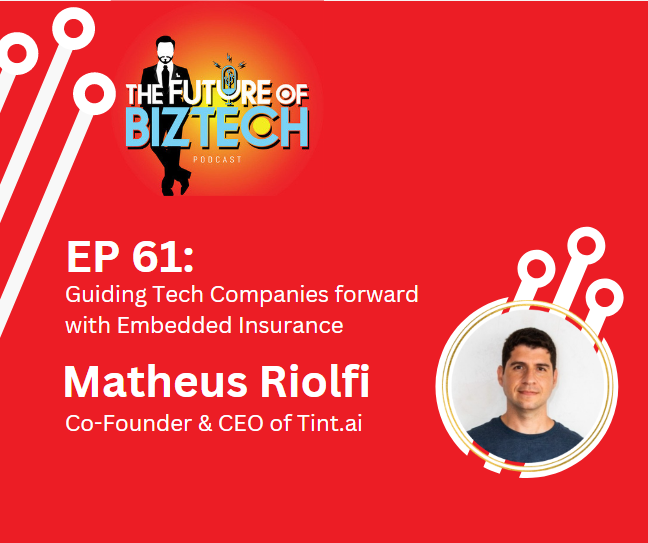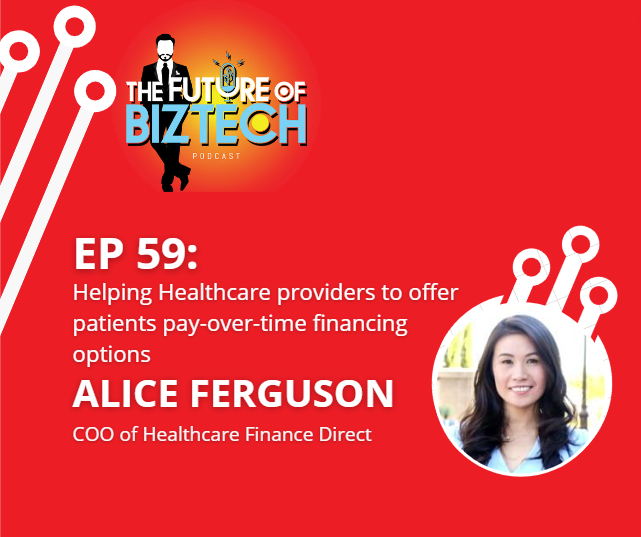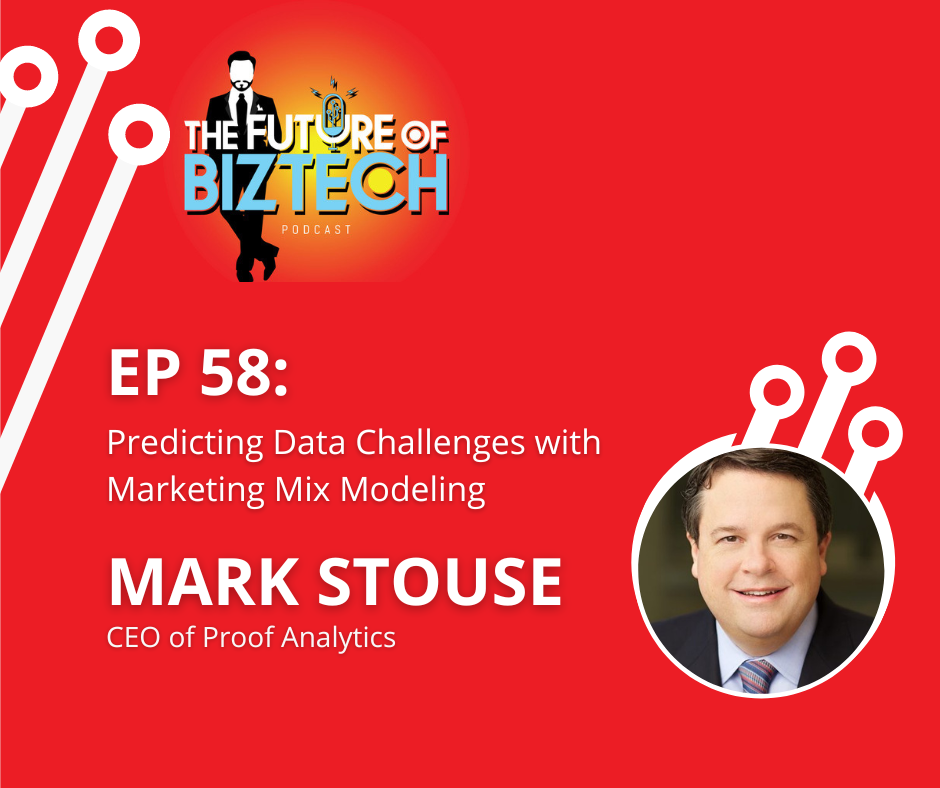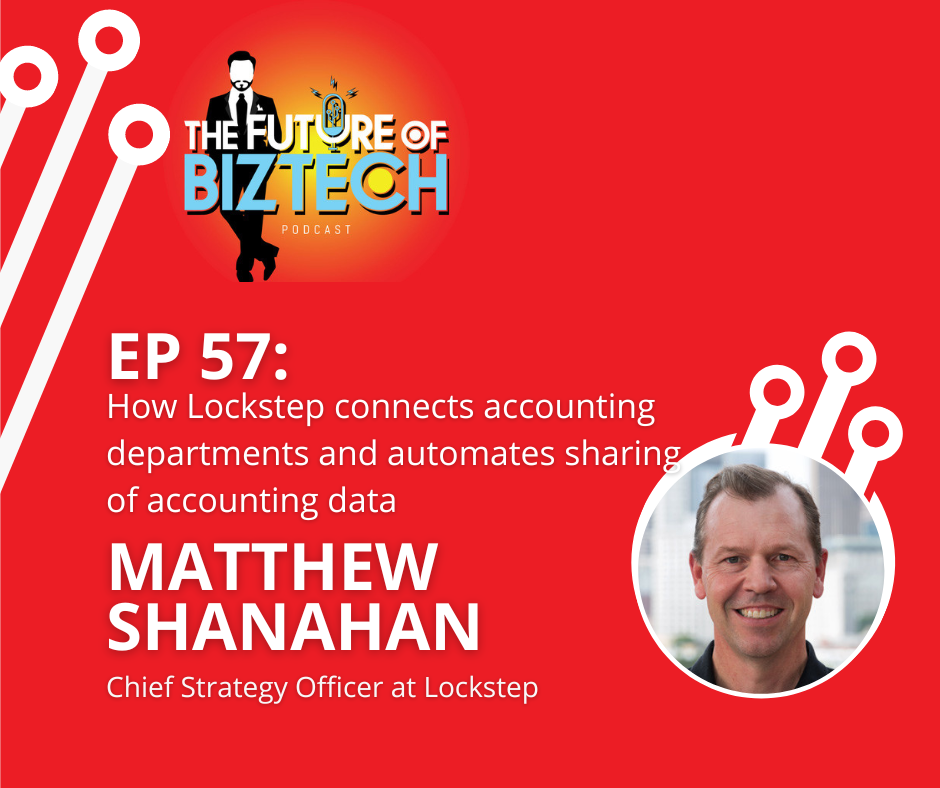Learn more about Aigo at: https://aigo.ai
Find Peter Voss on LinkedIn here: https://www.linkedin.com/in/vosspeter/
JC: Welcome, everyone to another episode of The Future of Biz Tech. I’m your host, JC Granger. I have another fantastic guest with us on the show today. And listen, if you end up loving this episode, please show your love and appreciation by following this podcast, wherever you’re listening and you know, give it a five-star review, preferably some cool comments on it, because that is how techies like you and I find cool podcasts like this. Listen, today I have the absolute pleasure of interviewing Peter Voss, who is the CEO and Chief Scientist at Aigo, Peter, thank you so much for being on the show. Why don’t you tell everyone a little bit about yourself? And what does Aigo do?
Peter: Yes, great, thank you. So we do conversational AI or chatbots. And in particular, what we do is a chatbot with a brain. Now, as many of you may have noticed many of the chat bots out there are not very smart. So ours has an actual brain, it remembers what you said earlier, it can think about, you know, can reason about what you’re saying using context. So it’s much, much more useful because it has a brain.
JC: So who’s kind of your perfect client for this? I mean, this chatbots are used by so many different types of websites. Is this something that you see more on the E-commerce side? Do you see? You know, are you doing more enterprise-level tech companies like who you guys going after with this?
Peter: Yeah, so the perfect example is one of our clients is 1-800 flowers, in fact, a whole group of companies, which is Harry and David and popcorn factory, and so on, and they’re using it to provide a hyper-personalized service to their customers, where it remembers who you buy gifts for, on what occasions what kind of gifts and you know, it can, it can help you along with that. So that would be a perfect example. But our technology is industry-agnostic, it can be any industry. So you know, it could be banking, it could be medical it could be something like a diabetes coach, you know, somebody would help a person with diabetes to, you know, to optimize the eating and exercise and whatever, you know, insurance. So it can also be used as what we call a co-pilot to complex software. So, you know, a lot of software is complex that people don’t know all of the features of the software, or you need to go to do many menus or so to get to where you want to. So you can have Aigo as a co-pilot, where you can just tell it what you want, and it will then you know, get you the answers. So the technologies of conversational AI technology can be applied to anything, but our current focus is very much on, you know, customer service. So what typically you have humans doing, and often in a very frustrating way that you have to wait a long time and you know, all the limitations of that. So that’s what we focus on.
JC: So how does it learn? I mean, it doesn’t come out of the box ready to just understand everything about a company. So someone installs this Chatbot? What is the process where it starts getting smarter and smarter and understands how to answer does it start with a human first? And does it? Does it track what they’re saying? And then figure it out from there? Is there an error percentage where you have to watch it a little bit? You know, just kind of how does it get to be as smart as it is?
Peter: Yeah, it’s a very good question. And of course, many people now know about ChatGPT. And, you know, products like that these large language models, which are trained on massive, massive amounts of data, really everything on the internet, on Twitter, and so on, and so on. Now, the problem, when they get trained on stuff like that, they also get trained on a lot of not-so-high-quality data, let’s put it that, like that. So you have no, no control, or very little control over how they will behave. So our approach is the opposite –we make sure that all the knowledge that our chatbot has, has been curated, and you know, can pass legal review, review of your, you know, marketing department, your customer experience, people, and so on.
Peter: So we consult with a customer and say, What are your business rules? What are the products that you’re selling? What are training materials that you have for your call center operators, and things like, exactly, and we feed that into the system, but it’s all curated. So you know, it’s not you know, unfortunately, it’s not people think you can just press a button and say, Hey, all the information we have on our website, just suck it up. And, you know, no, it doesn’t work that way. Because our business rules our APIs, you know, you know, if you want to change your order, or you want to get a refund or something, there are lots and lots of business rules and you know, how it interacts with your back end services. So there is that integration required, but we start with a brain that already knows how to hold a conversation that knows about people and relationships and so on. So there’s a core common sense information and knowledge that it has that, you know, we put together over many years. And then you add a layer to that, which is customer-specific.
Peter: And in fact, there’s a third layer that is specific to each person. So it’s hyper-personalized to the individual. So you know, once you call in, for example, let’s say you have a problem with your router at home, you call in and you know, the first thing it might say is, well try rebooting it, you know, okay, now you call back 10 minutes later, and our system will remember and say, Okay, did that work? And it won’t ask you again, you know, have you tried rebooting your system, and so on? So it’s like talking, it’s like, you’re talking to the same person who remembers the conversation? You know.
JC: Sure. Okay, that’s interesting. Now, I’m gonna I want to step back for a second, I want to learn to have the audience on a little bit about yourself. Give us your background, How long have you been in the tech industry, I believe you coined the term artificial general intelligence. I’d like to hear about that. Because I mean, if you’re, if you’re an OG of tech, and I want to know and hear the background.
Peter: Yeah so I mean, I’ve been in technology, one, one form or another forever, I started as an electronics engineer, you know, working on industrial electronic systems, then I started my own electronics company, fell in love with software. My company turned into a software company, I then developed an ERP software system, basically a software system for big or small businesses, you know, to do their payroll, accounting, billing, and so on. And their company was very successful. We went from the garage to 400 people and did an IPO. So that was super exciting. It’s when I exited that company that I said, Well, how can you? I was very proud of myself, but still, the software is kind of dumb, you know, if the programmer didn’t think or something, it would just give you an error message or, you know, it wouldn’t, it didn’t have intelligence. So how can we have intelligence software, that’s really what consumed me for the last 25 years working on that. Took five years off just to study all the different aspects of intelligence, before starting my company. So in 2002, I got together with some other people, and three of us coined the term artificial general intelligence or AGI, which is not quite commonly used, you see quite a bit of that, which refers to human-level human-like intelligence in a computer, a computer that can think and learn and reason the way humans can.
JC: So what motivated you to? Are you a founder of Aigo? Or do they bring you in? I see, Okay, what motivated you to start the company? Like, what problem did you see? Like, well, you can kind of write your ticket with your background, right? So what was it specifically about chatbots? And AI that drew you to that, versus almost anything else you could do with AI?
Peter: Right? Well, I mean, artificial general intelligence is the holy grail it’s once we can have computers that can think and reason and learn at the level of humans. Imagine you train one of these AIs to be a cancer researcher, now, you can make a million copies of that, you now have a million cancer researchers chipping away 24/7 communicating with each other, no egos getting in the way, you know, focused on that problem. So how that can improve the human condition? Basically, to me, it’s, I mean, a, it’s a fascinatingly difficult problem to solve. So, you know, it’s challenging, but it also has such an enormous payoff, I think, for humanity, that I couldn’t think of wanting to work on anything else. Now, doing chatbots and customer service right now is a stepping stone towards that, you know, it’s to commercialize an early version of it, We’re still a long way from human-level intelligence, but we have a lot more intelligence and a conventional Chatbot. And we are, you know, working towards, in fact, I can talk about a project which we are about to start to accelerate this development.
JC: Well, let’s start there. I do want to hear it.
Peter: Okay. So, I, you know, I started my first AI company 20 years ago, and we’ve been alternating between R&D basically improving the intelligence of the system, initially building the prototypes and so on, and then getting better and better. And then we needed to commercialize this because our investors, you know, I had to bring other people in, I didn’t, I didn’t have that much money that I could just find it all myself. So we brought investors in and they wanted a commercial product. So we’ve focused on Call center automation. But that then came at the expense of R&D. So I ended up selling that company because, you know, all of my time was spent in, you know, upgrading our calls, our data center, and, you know, just working on commercial stuff, and not really on intelligence. So I sold that company and then went back to founding a new company, which has now turned into AIGA, where we spent another four years just on development to make it too general to develop the second generation of this core technology. And then we’ve now in a commercial phase, again, to commercialize footballs to get revenue to increase our, you know, the effort we can put into R&D, but also for the practical experience as a reality check, you know, to have real problems in the real world, that is not just an academic exercise but with the excitement about ChatGPT. And some of the benefits we can get from these systems, we have actually, we were just in the process of launching a major initiative, to focus again, to put to build a big, much bigger team, to focus on increasing the intelligence and to get to human-level intelligence much sooner. So that’s what I’m very excited about. Now, we’ve been working on that for the last few months, we are currently raising some more money for that initiative, and also building and expanding our team basically, to have a much more focused effort on intelligence itself.
JC: So I’m a marketing guy by trade. So I’m always curious, what are you guys doing to get the word out about it? I mean, you’re on the podcast, so that that’s one, are you guys running ads? Are you doing TV stuff? Are you doing emails? I mean, just what is kind of your guys’s general strategy for even people knowing that you exist?
Peter: Right? So our strategy is to go after large corporate clients. And, you know, it’s really about the credibility and connections. Now, actually, as a turned out, 1-800 flowers came to us not through connections, but by listening to a podcast that I was on. And they said, this rings a bell, we’ve tried three different chatbots, you know, we tried the best chatbot, the most well-known chatbots out there. And they just couldn’t provide the kind of personalized service that we require. And they listened to my podcast and said, okay, they contacted us. So that was very successful. So we, you know, we do spread words through podcasts. But otherwise, it’s really through working with partners, who already have connections with these large customers. So we have quite a large partner network that we that we’re working through, to get to get to clients.
JC: Where do you see this industry going? You know, normally asked this question. I say you know that five to 10 years, but I feel like when it comes to AI, that’s not even fathomable at this time. Because the exponential growth curve makes it probably impossible to ask a five-year out plan as much as maybe just one year, like, where do you see in one to two years, let’s say the whole industry? Let’s call it the Chatbot Specifically AI you know, you plus your competitors. I mean, people are going It’s an Arms Race, right? I mean, people are going to be trying to catch you up to right, but just do you see anything changing when it comes to let’s say, legislation? Right? There’s a lot of AI controls now that they’re going to start trying to put in, I think rationally so I hope they don’t overregulate it. But it can’t be unregulated. Given the implications of it. Do you see things like this going in any certain direction? Where do you see the future?
Peter: So at the moment, there’s, the focus is totally on these big data systems, these large language models like Chet GPT, and they are, I think, significantly, I mean, they are amazing, they’re the technology is amazing, you know if you can just tell it to write you a poem or to you know, come up with a political speech in the style of Shakespeare or a rapper, you know, whatever. And it can do quite an amazing job of that or writing some piece of code. The thing is always has to be a human in the loop, because they are quite unreliable, you know, they make up stuff. I mean, for example, I can ask you to tell me about this article that Peter Voss wrote about this. And I just make up something, something I never wrote. And we’ll come back and tell me about the article that I supposedly wrote, complete with references completely made up, you know, so there are significant problems with this approach, the statistical approach, it’s basically, you have this massive amount of data, but it’s completely uncurated and uncontrolled. And you have this fantastic, very plausible language generation system, that makes things sound plausible. But if you try to deploy this in enterprise in anything serious, like in front of a customer to, you know, handle the refund, or just to handle a sale or something like that, with all the business rules, and you know, that your legal department has to sign off, it’s just not the right technology for that. And I think companies are big companies are now rushing, everybody wants to implement ChatGPT or you know, a competitor of that, and I think they’re going to be very disappointed in what it can do.
Peter: Now, it’s fantastic for things like just FAQs, like internally in the company to find documents or stuff like it, as long as there’s a human in the loop to say, this doesn’t make sense, you know, or it’s a bit like search. When you do a Google search, you look through it and say, oh, yeah, this, this is what I’m looking for. So as far as that technology is concerned, I think companies are going to be quite disappointed in terms of what the limitations are in that. Now, on the other hand, it has proven that we already have enough hardware, that the hardware capabilities available today can do amazing things, you know, amazing language capabilities. But I think they need a different approach, and I’ve written extensively about that it’s what DARPA called the third wave of AI, the large language models are in the second wave. The third wave is building a system that’s inherently more like a mind. What’s more, you know, that specifically can think about thinking and knows what he’s talking about. So that requires a different approach. That’s the approach we’re using. And I think that’s very promising. And I think within a few years, we can have extremely powerful systems based on what’s called cognitive architecture, or the third wave of AI.
JC: You know, in my company, we do lead generation and appointment setting for enterprise-level B2B tech companies. And so I’ve thought about this AI side of it, you know, people say, well, is that going to take over those things? And as you said, My theory was that, at least for now, there are so many different angles that it has to understand because you’re right, when you start getting into a sales process, if it’s just informational things, that’s different, right? Because of things like that. But when you start getting into cognitive decision-making, and answers that can put a company at liability, right? Like if a sales chatbot said, oh, yeah, we can do it for that discount. All right, can’t, then you’re on the record of saying you can, right? So implications in that process. So you’re right, I think that’s something that’s going to be handled by humans for quite some time. But I do see that the AI can take a lot of the load off of it in other areas, right? When it comes informational side.
JC: Now one could even argue that maybe the first part of lead generation, just that quick conversation back and forth, where AI doesn’t have to answer too many questions as much as understand and learn how to take a question, address it, and promise that answer if they book a call. Right? So now I can train it to do that, I can train it to do that, but I can’t let it sell for us, right? For our clients, so yeah, I find that interesting.
Peter: It depends, you know, it depends on how valuable your prospects are. And, you know, whether it’s just like a percentage game that you’re playing that, you know, that you can say, alright, with automation, we can hit a lot more people and you know, if we have 3% success, then that’s great, you know, we can just hit a lot more people, but if it’s about retaining an existing customer or having something high value, you know, where you just get one shot at talking to the customer, you know, through an introduction or something like that, you don’t want to do that. And, you know, something that I think it’s a misunderstanding that people believe that these chatbots can learn as they go along. They do not, they do not learn they’re called to, you know, GPT The G stands for generative, which means they make up stuff based on the knowledge that they have. The P and M means pre-trained So it’s a generative pre-trained transformer, Technology, transforming itself simply doesn’t,
JC: it’s not going to keep, you have to keep feeding it information, otherwise, it’s not going to just start,
Peter: It’s not, it’s not going to, it’s not going to get better, you have to then retrain the model. And that’s, that’s a nontrivial undertaking, because the way you train it is, you need to have very specific training data that you set up. And, you know, and there are all sorts of problems with that. One of them is that you can have catastrophically called catastrophic forgetting. So you can train a model that knows certain things, then you want to train it additional things, and it catastrophically forgets you had before. But it’s very unpredictable. So you don’t know that it forgot that necessarily, unless, you know, so they are huge problems. These systems do not just get better by being exposed to conversations.
JC: Yeah, I heard a term the other day, I think it was knowledge drift or cognitive drift. It was one of those two, essentially because as of this date, we’re filming, ChatGPT, and its accuracy started falling off. And people thought that maybe it was open AI that was doing that on purpose. And then what they realized was that no, this is something that can just happen, Whereas it keeps thinking through information and giving feedback, it changes the way that it finds and processes information to give feedback. So it can be like the original version of how he was finding information and deciding that information is the most accurate, that evolved negatively, were through the process itself, because remember, this isn’t open AI open being the key word here. This is based on everyone doing what they’re doing. So there became this massive drift of its process naturally, which then made a bunch of things less accurate. Now, it can go back the other way. But your system is a closed circuit, right? It’s just for that company. So I don’t I don’t know that that would happen in a bad way. With anything like what you’re doing now. When you have everyone in on it. Yeah, it’s just it’s a really interesting phenomenon that they’re that they’re seeing right now.
Peter: Yeah. And that’s really, it’s inherent in that approach. You know, as I say, That’s what DARPA calls a second wave of AI, which is statistical big data systems. So they are statistical as opposed to cognitive, what you want you to want a system that can think about that can reason about what it’s doing that kind of knows what it’s saying, rather than just, you know, statistically coming up with plausible sentences.
JC: Yeah, all right, we’ll take a quick shift here. So I would love to know, because you have been doing this stuff for so long, and you are a veteran of the tech community. I want to know, what did you like, what was what were you like, as a kid when it comes to stuff? Like, what did you do? What did you dream of doing and being when you were a kid? And if this is it, that’s fantastic. It’s not like, how did you get there? Right. Like, some people like to be a firefighter, but like, now they own a SaaS company, right? So, like, what a Peter Voss want to do when he was a kid? And how does that transition to now?
Peter: Well, I was always interested in technical things. You know, I had an electronics kit that an uncle gave me for a birthday. And so I built these electronic circuits, so that, you know, it was just an interest early on. And I remember, I must have been about 10 or 11, or something, I was thinking, surely we could organize all the world’s information was sort of, is what I guess would now be a skew code, you know? And so, that kind of thinking, you know, came quite natural to me that surely we should be able to sort of rationally arrange things and use rationality and reason, I mean, not explicitly. And then I was interested in philosophy.
Peter: So I started reading philosophy books, in terms of, you know, what is reality? How do we know anything? What is free will? You know, and what are the limits of knowledge and, and things like at an ethics, how do we know what’s right and wrong? So I’ve written quite a quite a bit about these things. If anybody’s interested, I have days on medium.com, under my name is easy to find. So I think I’ve always had that curiosity. But then I had to start working at 16. I didn’t finish high school. That was just problems with my family. And so I started working at a bank in a hamburger place at a motorcycle shop, you know, just whatever work I could get to, to feed myself. And then I got a job with a company that did electronics, which was really what I was interested in. I basically became an apprentice there and ended up being an electronics engineer, and then I started my own company. So you know, just my particular path of going there. I’ve always enjoyed learning by myself. So that’s never been a problem before.
JC: You know, there’s with AI, there is a lot of, I see it as kind of a minefield with a pot of gold at the other end, right? That the payoff is big. But there are a lot of places where it can go wrong along the way, what is the best piece of advice you can give the audience, for any company thinking about integrating AI, into their systems or processes in any way? Is there you know, something to maybe to, to, for them some advice for them to go and look at for what to do? And that may be something for them to be cautious of and avoid. What kind of advice can you give when it comes to bringing AI into your company? For people who are considering it?
Peter: Well, obviously, if you say that it’s looking for conversational AI, they should talk to us. But, leaving that aside, in terms of just be done, don’t be caught up by the hype of it, you know, just use common sense stand back, and say, okay, you know, so many of the big companies have FOMO, basically, oh, we’ve got to do, we’ve got to do AI, you know, and then they blindly do like anything, and they talk, you know, spend a lot of money with consultants, who quite often aren’t giving good advice, you know, they don’t have to pay the price. If the system, you know, if the project doesn’t end up working. So, you know, just use common sense and ask hard questions, you know, where has this been implemented? Does it work? You know, how do we know that it’s going to work? What is it going to do? But there’s this big fear of missing out right now. And companies are being swept up by the hype. And then of course, the tech people in the company, want to play with this cutting-edge technology, but they’re not necessarily the right people to ask.
JC: I agree with that. Yeah. And I especially Yeah, get some people who are a little too eager to play with the new toy. Right? Shiny. Nobody’s looking at the safety instructions on the side of the box, you know what I mean? They’re just going all in? So yeah, I mean, I can have that idea that AI is gonna do a lot of great, it’s gonna cause a lot of problems, too. But just any disruptive technology is probably going to do both. Right? So it is gonna be very interesting next year to see kind of where they are, when it comes to like legislation to see like, what kind of regulations are they going to try to put on it? If there’s any kind of safety measures? There’s a lot of angles, it’d be interesting here.
Peter: But you know, the big companies just game, the regulation to their own, you know, to their benefit that, yes, a software, you know, the big software has to be licensed. But really what they’re doing is they’re putting out their competitors. They saying, Well, of course, our system is licensed because we are in charge of the licensing process, directly or indirectly, but we might drag our feet about licensing our competitor’s models, you know, because maybe they’re not safe. You know. So..
JC: The dog world in the tech industry, for sure.
Peter: Yeah. So I think just following on to what you just said, I think one thing that companies should be aware of the current technology, any application where you need a human in the loop, you know, where you need this quality, you need to be sure you’re doing the right thing. This technology is not ripe for that. Now, you know, so we were talking about FAQs, information systems, like if you have many employees, or hundreds of employees or 1000s of employees to have internal FAQs that can help people answer questions, you know, that are not critical if they’re not going to make decisions, you know, on based on that, but just gathering information. I think they’re extremely useful, you know, these natural language interfaces, but not anything critical in the company.
JC: Well, listen, this has been a fantastic interview, where can people find you, personally? And where would they find the company if they wanted to go check out the website, and things like that?
Peter: Yeah, they’re easy. Aigo.AI. A-I-G-O.AI and Peter@Aigo.AI
JC: Perfect. Listen, for everyone out there listening again, If you liked what you heard today, be sure to subscribe to this podcast, and give it that five-star rating, preferably with some writing behind it. So other techies like us can find and enjoy learning about all these amazing and helpful b2b software and technology on the market today. Peter, thank you so much for being a guest. We’ll talk after the show. I got some more questions on my own. Great, thank you. All right.
